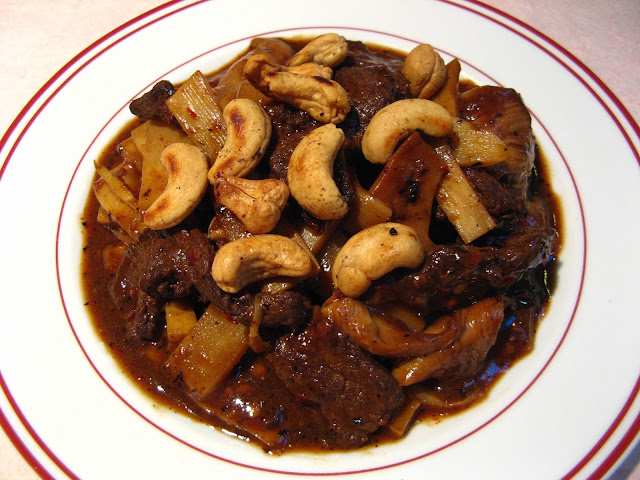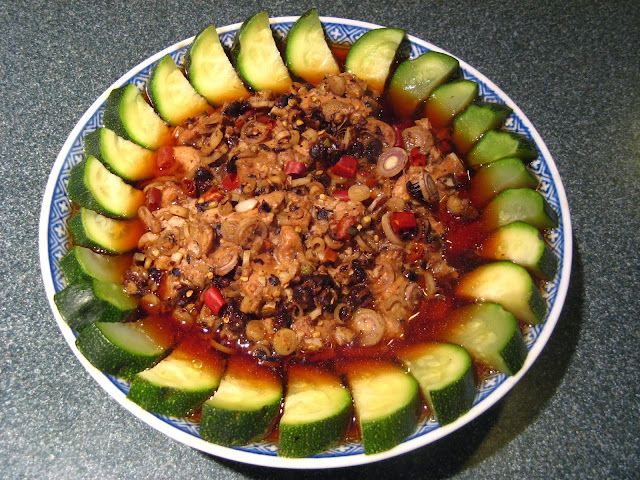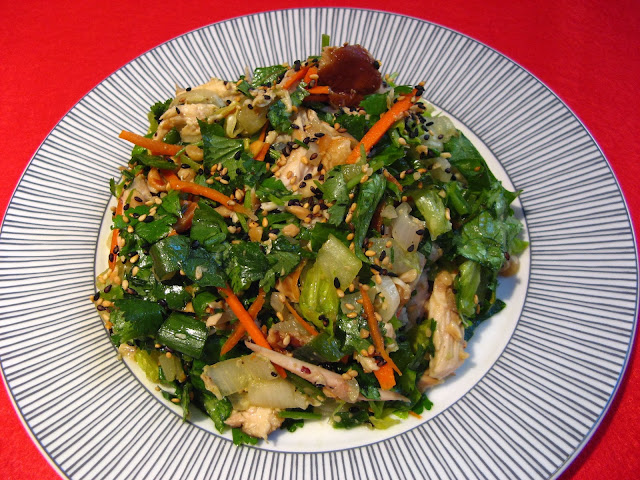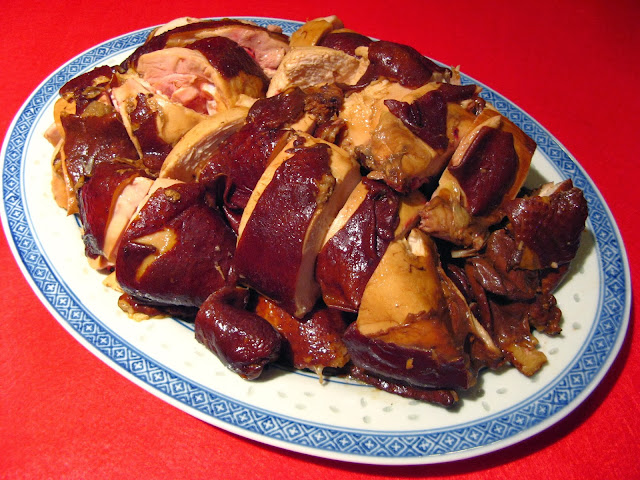This recipe was updated on 16 Oct 2014. Some instructions
and ingredient quantities were changed.
Beef tendon is usually eaten in a stew with beef outside flank,
which can be found in the Beef
Flank and Tendon Stew (燜牛筋牛腩, Man1 Ngau4
Gan1 Ngau4 Naam5) recipe, but beef tendon
can be the star of the dish all by itself. Beef tendon is tough and requires
long slow cooking, at which time it becomes soft and gelatinous, so making this
dish is a two-step process. The first step is to soften the beef tendon through
slow cooking, and the second step is to stir fry the beef tendon with
vegetables. I use a slow cooker in the first step since I can just cook the
beef tendon unattended. The beef tendon itself is nearly tasteless, so the
other ingredients give the dish its flavor, with the beef tendon supplying the
texture to the dish.
Enjoy!






